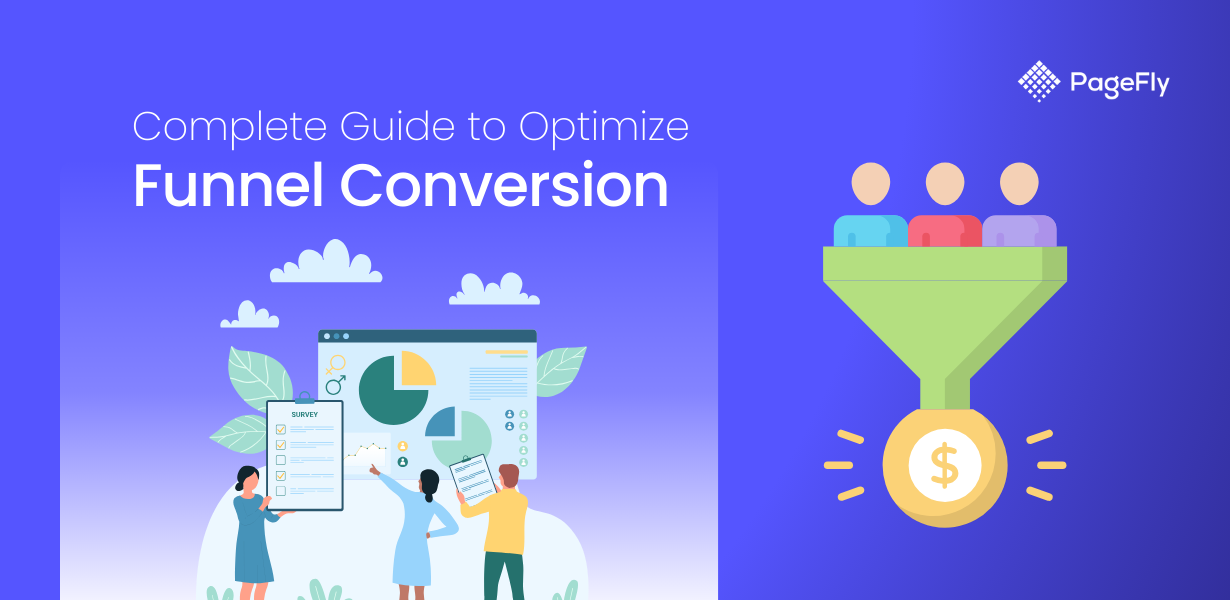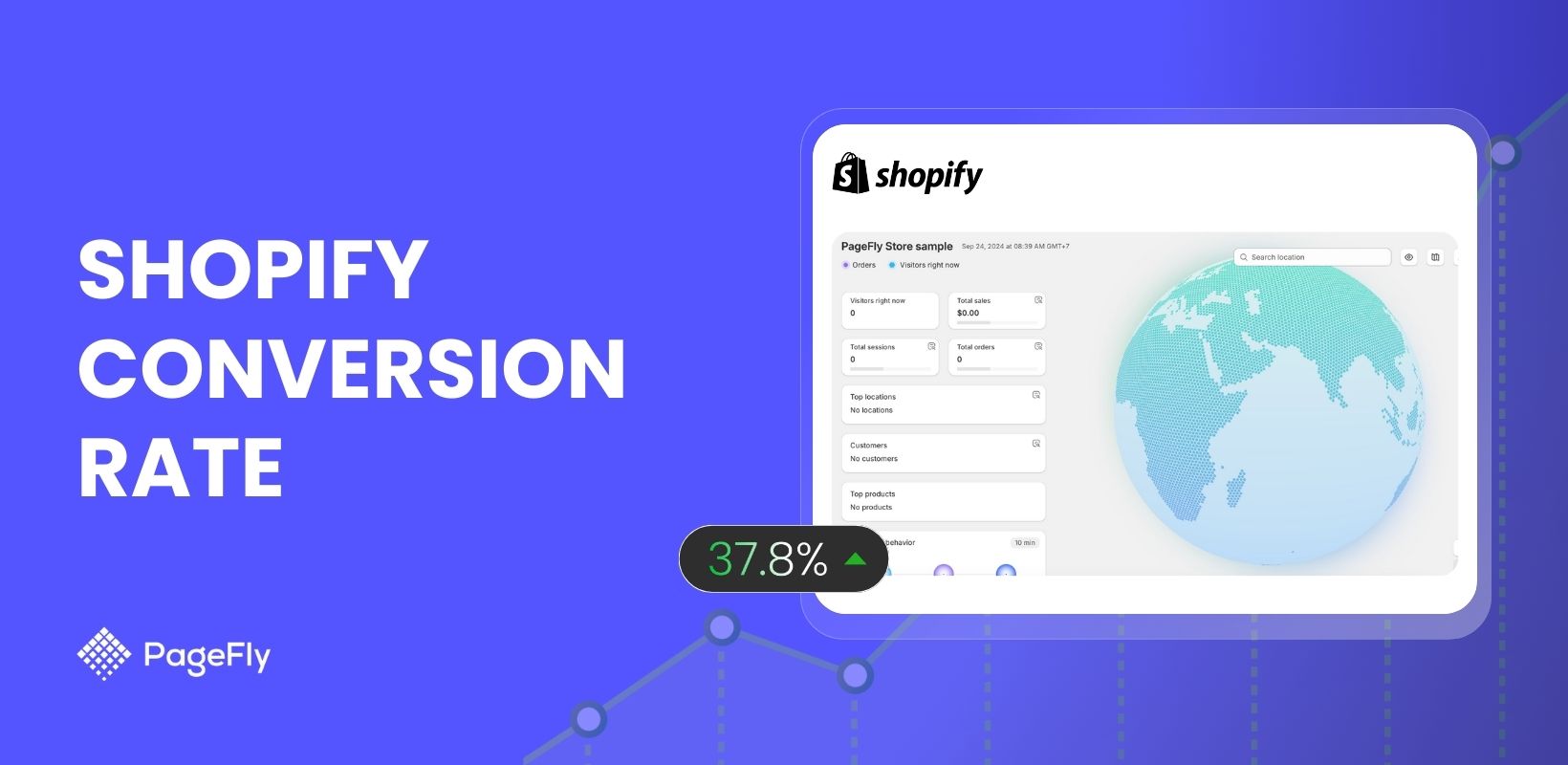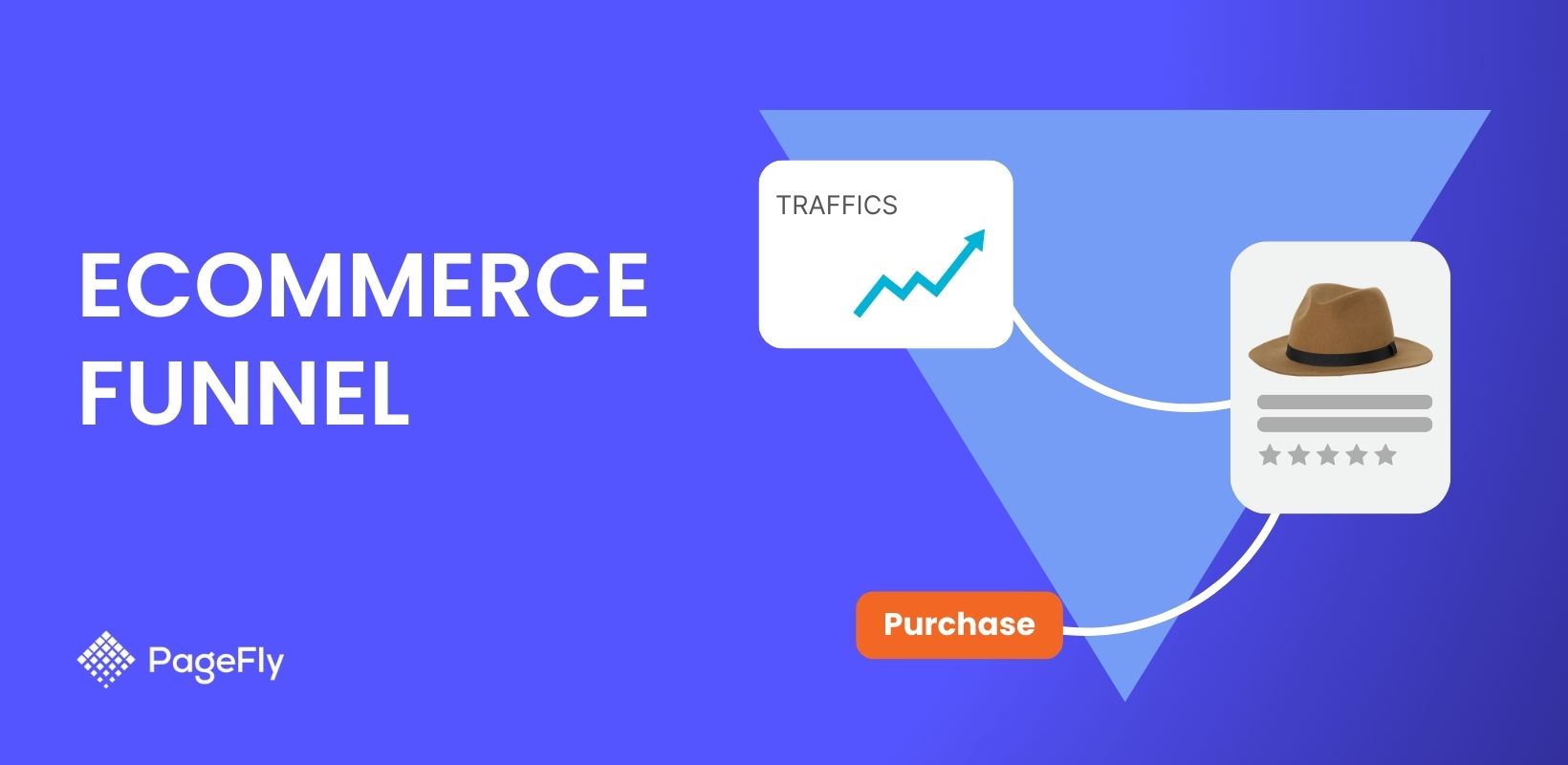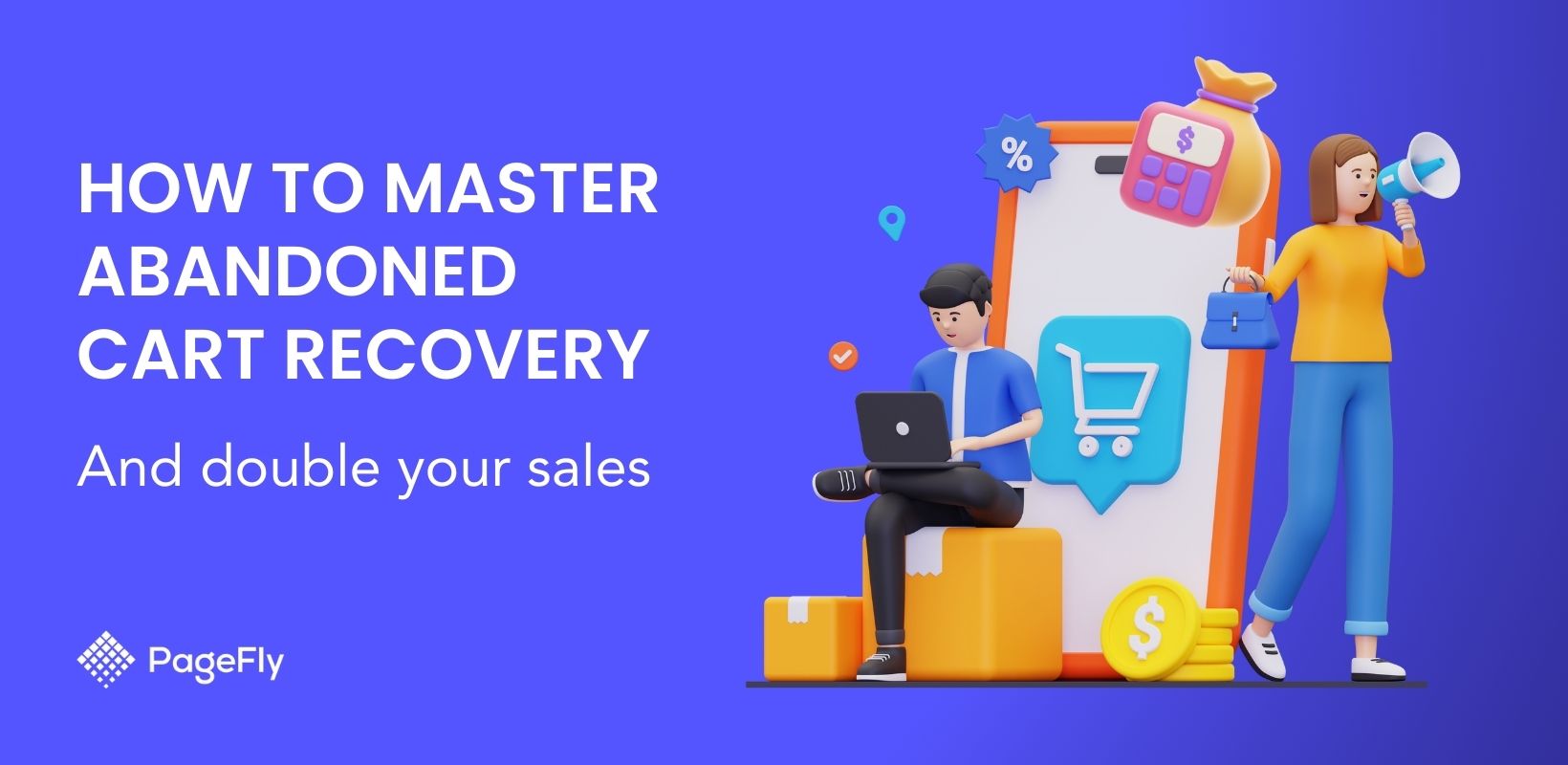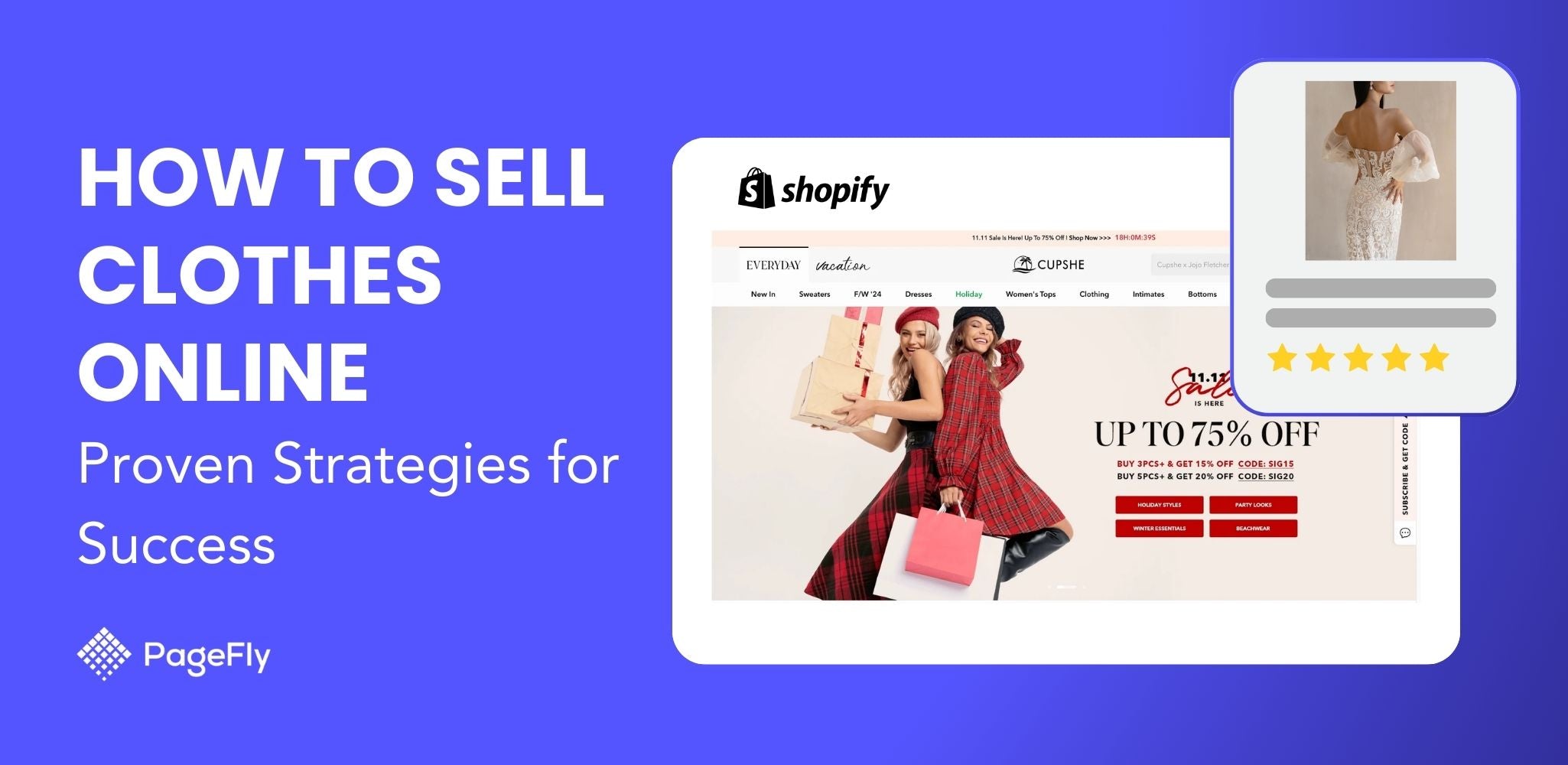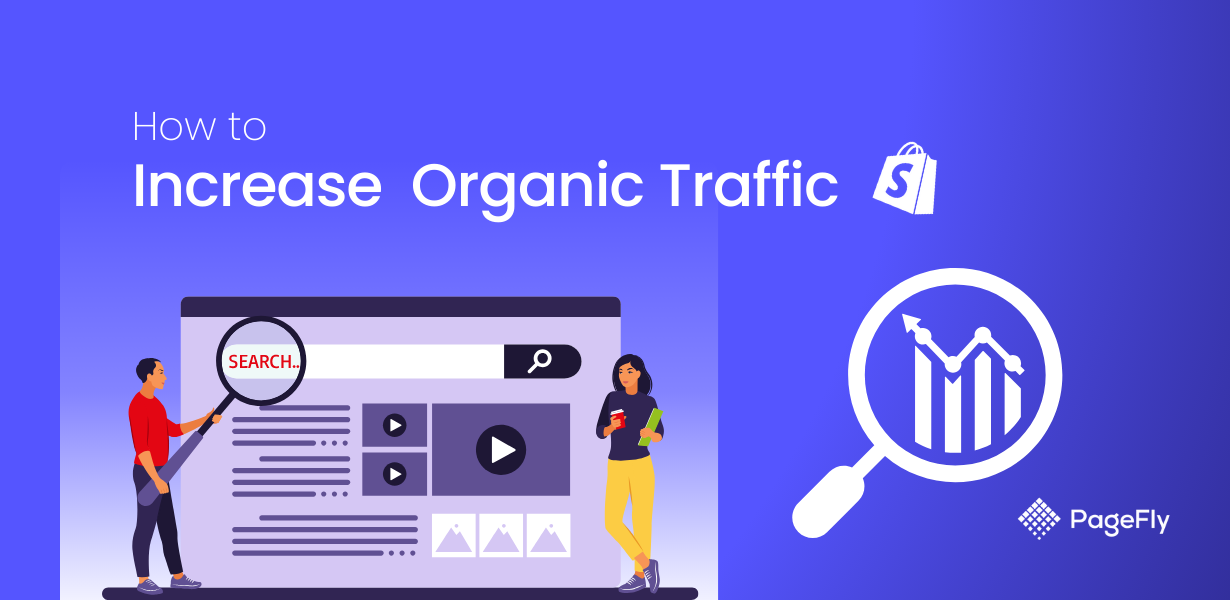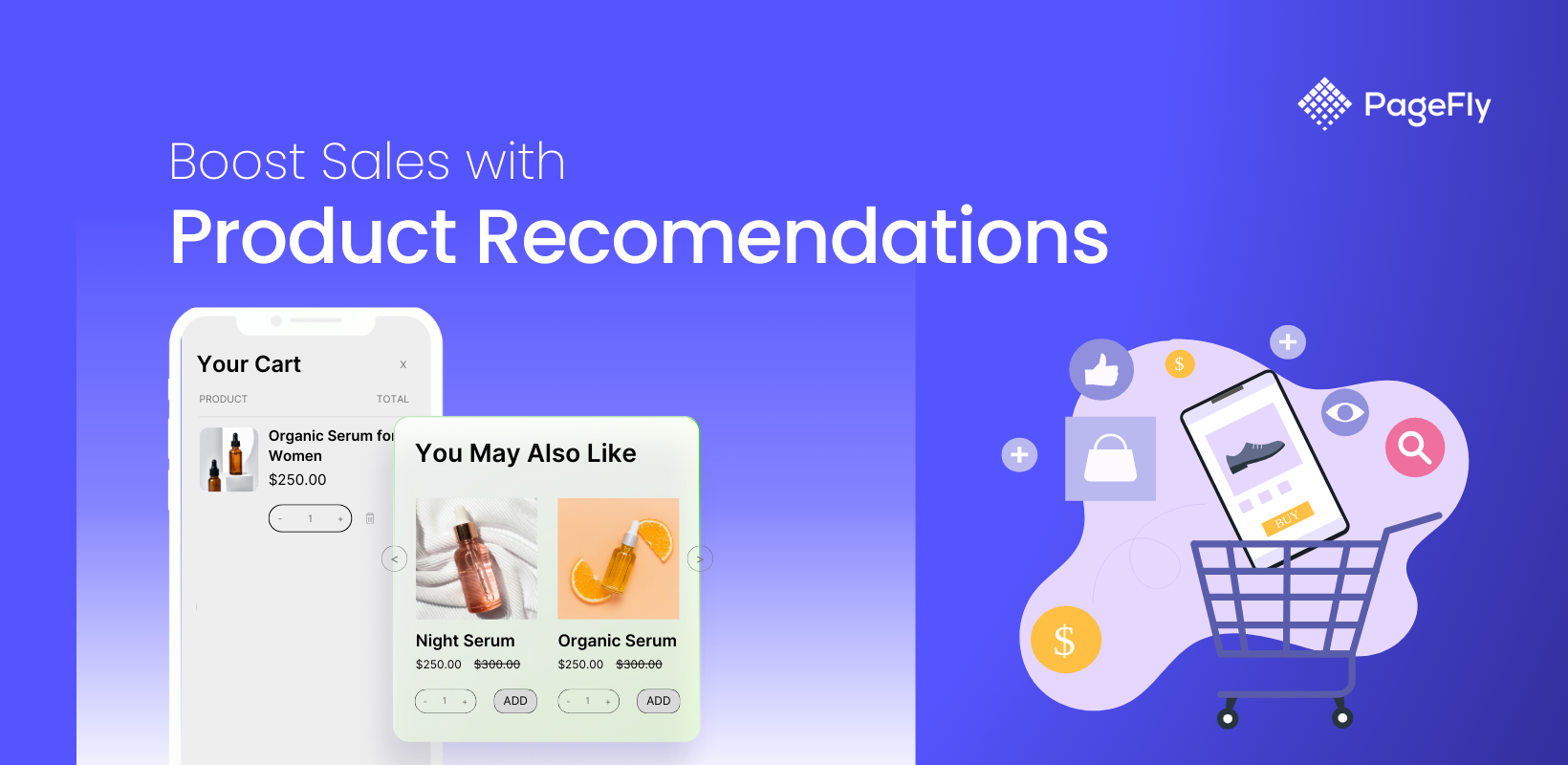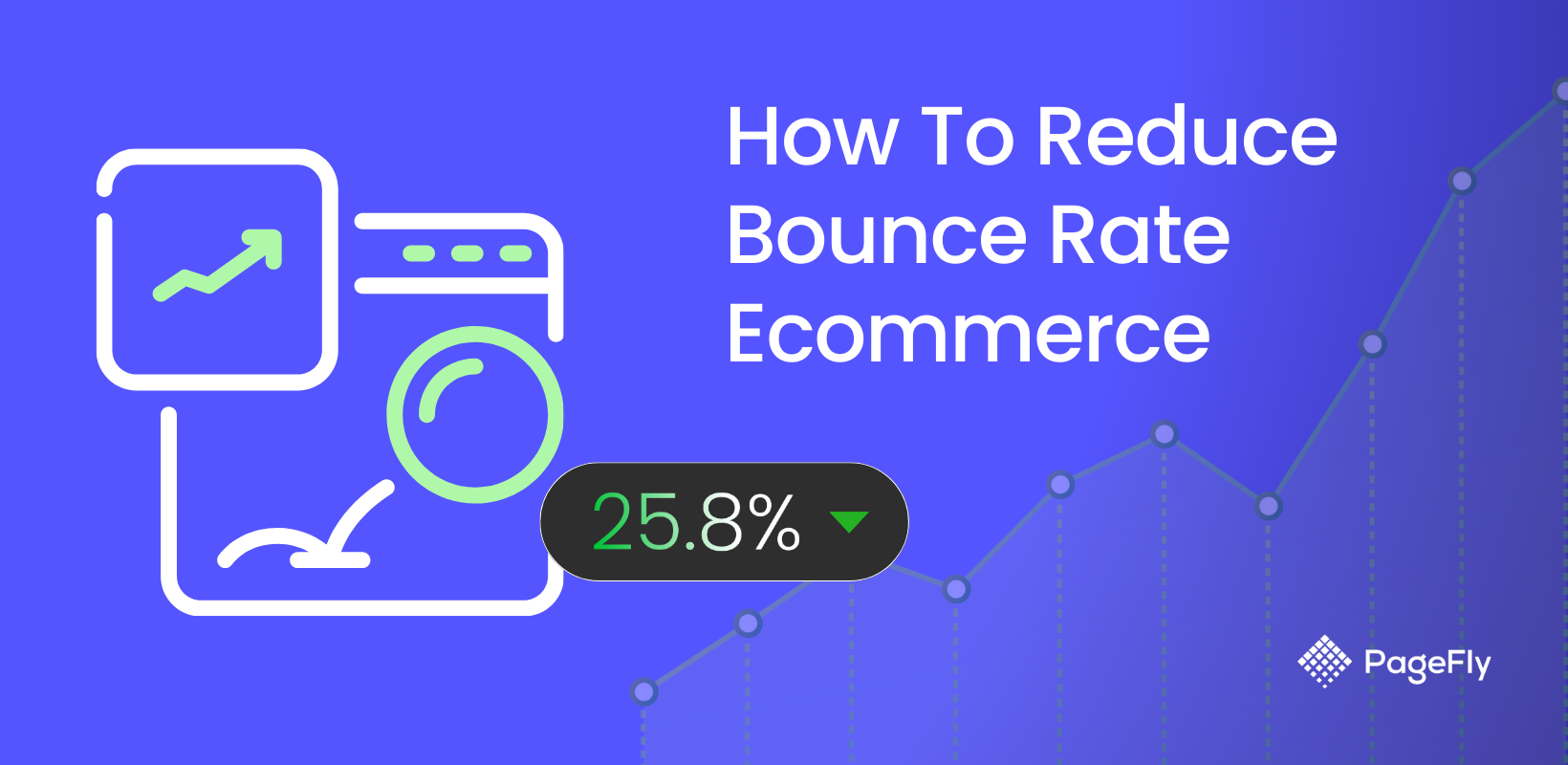70.19% of online shopping carts are abandoned before purchase, according to Baymard Institute's research. That's a staggering amount of potential revenue slipping through the cracks of e-commerce stores every day.
The good news? By understanding and optimizing your funnel conversion process, you can significantly reduce abandonment rates and turn more browsers into buyers. Whether you're struggling with cart abandonment or looking to increase overall sales, mastering funnel conversion marketing is key to transforming your store's performance.
Let's dive into proven strategies for every level of your funnel, from first click to final purchase.
Understanding Funnel Conversion
What is a Funnel Conversion?
A funnel conversion represents the path visitors take through your ecommerce site, from initial awareness to final purchase. Unlike a simple customer journey map that outlines touchpoints, a conversion funnel specifically focuses on the transformation of visitors into customers at each stage.
For example, a handmade jewelry store's funnel might flow from 1,000 Instagram visitors (awareness), to 200 product browsers (interest), to 50 cart added (consideration), to 10 final purchases (conversion) – forming the characteristic wide-to-narrow funnel shape.

3 Levels of a Funnel Conversion
Let's break down each level of the funnel to understand how visitors transform into customers:

Top of Funnel (TOFU) - Awareness
At this level, potential customers are just discovering your brand. They might land on your store through social media, landing pages, Google searches, or advertising. Your goal here is to make a strong first impression and capture interest. Hubspot indicates that companies that optimize their TOFU see an average increase of 55% in quality leads.
Middle of Funnel (MOFU) - Consideration
This is where visitors start evaluating your products more seriously. They're comparing options, reading reviews, and determining if your products meet their needs. An impressive 95% of consumers check online reviews before purchasing, making this stage crucial for building trust and engagement through funnel analysis (source: Global Newswire).
Bottom of Funnel (BOFU) - Conversion
The final stage is where interested prospects become customers. This includes the checkout process and final purchase decision. A top consulting firm found Shopify's conversion rate exceeds competitors by up to 36% and averages 15% higher. Optimizing the BOFU stage through funnel optimization strategies can significantly boost sales.

Optimization Strategies by Funnel Levels
Each level of your conversion funnel requires specific optimization strategies to maximize its effectiveness. Let's dive into actionable techniques for each level.
Top of Funnel Optimization
Improving the quality of traffic to your store starts with targeted marketing efforts. Incorporating CRO marketing techniques allows you to align your campaigns with conversion-focused goals. Focus on:
Refine Your Traffic Sources
Instead of chasing any visitor, focus on attracting qualified traffic that matches your ideal customer profile. Here are the action items:
- Research and target specific product-focused keywords: Identify search terms that your potential customers use when they're ready to buy, not just browsing. For example, target "best project management software for remote teams" rather than just "project management."
- Create detailed audience personas for ad targeting: Go beyond basic demographics and develop comprehensive profiles that include your ideal customers' pain points, goals, and online behaviors. Use these insights to craft targeted ad campaigns that speak directly to their specific needs and desires.
- Partner with relevant niche influencers: Find content creators who have already built trust with your target audience and whose values align with your brand. Reach out to 3-5 potential partners this month and propose collaboration ideas that provide value to their audience while promoting your product.
Craft High-Converting Landing Pages
A well-optimized landing page serves as your digital storefront. Drawing inspiration from proven landing page examples can help you create pages that drive conversions. Make them count with must-have elements:
- Benefit-focused headlines: Capture attention by highlighting what your customers will gain. Your headline should speak directly to your audience's pain points and desired outcomes.
- High-quality product imagery: Show your product in its best light with professional, clear photos. Remember, customers buy with their eyes first, so invest in imagery that builds confidence.
- Strategic trust indicators: Display customer testimonials, reviews, and security badges where they matter most. Building trust through social proof helps overcome hesitation.
- Focus on Value: Don't just list features - communicate the meaningful benefits your product delivers. Help visitors understand how their lives will improve with your solution.
This image below provides a visual guide to the key elements that drive conversions on landing pages. PageFly offers you a customizable layout for landing pages that helps optimize conversions effectively. Using PageFly's intuitive editor, you can effortlessly design high-converting pages that align with your brand's requirements and improve funnel conversions.

Deliver a Seamless User Experience
Speed and simplicity are essential for boosting conversions, as users tend to abandon websites that load slowly or are hard to navigate, leading to lost revenue. Integrating effective CRO and UX strategies is crucial to prioritize these aspects:
- Page load time under 2 seconds: According to Kissmetrics, 47% of users expect a page to load within 2 seconds, and delays can lead to lost customers. Improve your site's speed by optimizing images, leveraging browser caching, and minimizing HTTP requests to achieve optimal loading speeds.
- Intuitive navigation structure: Your website's menu and structure should feel natural and help visitors quickly find what they need. Review your site architecture and conduct user testing to ensure visitors can navigate to key pages within 3 clicks.
- Clear calls-to-action: Strong, visible CTAs encourage users to take the next step, whether it’s signing up, purchasing, or exploring further. Use compelling language to drive immediate action
- Minimal distractions: Keep your design clean and focused by removing unnecessary elements that could pull attention away from your main message and CTAs.
Key Performance Indicators:
Tracking these metrics provides critical insights into an organization's performance and progress toward its strategic goals, enabling data-driven decision making and continuous improvement.
- Bounce rate: Strive for a bounce rate below 40%, indicating that your content aligns well with visitor expectations (source: khalidhamada).
- Average time on page: Aim for over 2 minutes, which suggests visitors are engaging meaningfully with your content (source: brafton).
- Pages per session: Set a benchmark of 1.7 to 4.0 pages per session to measure meaningful user interaction (source: klipfolio).
- Return visitor rate: Target a return visitor rate of 30%-50%, reflecting a positive user experience and successful engagement strategies (source: crazyegg) .
Middle of Funnel Optimization
This critical stage demands a strategic mix of engagement and personalization. WiserNotify reports that using behavioral data for personalization can increase conversion rates by up to 20%, making this the perfect time to showcase your product's value. The goal is to keep them engaged and guide them closer to conversion:
Engagement Enhancement:
Boosting engagement is key to creating a memorable customer experience and driving conversions. Here are actionable ways to enhance user interaction:
- Interactive product displays: Rotate, zoom, and explore products in stunning detail from every angle. Try our 360-degree viewer to get a complete view of your desired items.
- Detailed product descriptions: Provide clear, informative, and compelling descriptions that address user needs and questions. Help your customers feel fully informed and ready to buy.
- Customer reviews and social proof: Showcase real customer feedback and ratings to build trust and credibility. Encourage satisfied customers to leave reviews and inspire confidence in potential buyers.
- Educational content that addresses common concerns: Share guides, FAQs, or tutorials to help users overcome objections and make informed decisions. Empower your audience with valuable information to drive conversions.

Source: PageFly template
Personalization Implementation:
- Product recommendations based on browsing history: Suggesting products relevant to a user’s past activity keeps their interest and encourages additional purchases. Implement this to provide a seamless shopping experience.

Heritage Foods, a PageFly merchant, enhances customer experience by using personalized product recommendations based on browsing history
- Dynamic content based on user behavior: Displaying content that adapts to a user’s actions creates a more engaging and relevant journey. Use this to keep visitors invested and coming back for more.
- Personalized email follow-ups: Sending targeted emails with tailored messages nurtures relationships and encourages repeat visits. Take this step to maintain ongoing engagement.
- Progress tracking toward rewards or free shipping: Showing users how close they are to earning rewards or free shipping motivates them to complete their purchase. Add this feature to enhance excitement and boost sales.
Abandonment Prevention:
Preventing cart and session abandonment is key to maximizing conversions and retaining potential customers. Proactively addressing user hesitations can significantly boost engagement and sales:
- Deploy exit-intent popups with relevant offers: Capture attention before visitors leave by presenting tailored discounts or incentives. Use this strategy to turn hesitant users into customers.
- Create targeted retargeting campaigns: Re-engage users who’ve left your site by showing them ads featuring their viewed items. Leverage this approach to remind them of what they’re missing.
- Offer proactive chat assistance: Address questions or concerns in real-time with live chat to resolve issues quickly. Implement this to keep visitors on track toward completing their purchase.
- Implement browse abandonment email sequences: Follow up with users who’ve browsed but not purchased, showcasing the items they viewed. Use this method to encourage them to return and complete their transaction.
Key Metrics for Middle of Funnel
Measuring the right middle-funnel metrics is essential to understand how effectively you’re turning interest into intent. Focus on these benchmarks to optimize performance and drive conversions:
- Add-to-Cart Rate (8% - 10% benchmark) indicates how well your product pages convert browsers to potential buyers (source: Tidio).
- Return Visitor Rate (around 30%) shows customer interest and engagement effectiveness (source: Shopify).
- Average Time on Product Pages (around 52 to 54 seconds) measures genuine interest and content effectiveness (source: Agency Analytics).

Bottom of Funnel Optimization
At the bottom of your conversion funnel, every small friction point can cost you sales. Here's how to optimize this crucial stage where purchase decisions happen.
Cart Abandonment Solutions:
Reducing cart abandonment is key to improving sales and recovering lost revenue. Implement these strategies to keep shoppers moving toward checkout.
- Automated recovery emails within 1-3 hours: Timely follow-up emails remind customers of their abandoned carts and entice them to return. Set up automated emails to recover lost sales efficiently.
- Exit-intent offers for cart completions: Capture customers just before they leave by offering discounts or incentives. Use exit-intent popups to encourage shoppers to complete their purchases.
- Cross-device cart synchronization: Ensure customers can access their carts seamlessly across devices to avoid disruptions in their buying journey. Implement this feature to provide a smooth and consistent shopping experience.
- Transparent shipping information: Clearly display shipping costs and delivery times to build trust and reduce hesitations. Highlight this information upfront to prevent abandoned carts due to unexpected fees.

Source: Parcel Panel Order Tracking demo store
Checkout Optimization:
Streamlining the checkout process is crucial to reducing friction and increasing conversions. Implement these strategies to make checkout seamless and user-friendly.
- Minimal form fields: Simplify the checkout process by asking only for essential information. Reduce barriers to purchase by keeping forms short and efficient.
- Guest checkout option: Allow customers to make purchases without creating an account. This flexibility encourages first-time buyers to complete their transactions with ease.
- Autofill capabilities: Enable autofill for payment and shipping information to save customers time. This convenience can significantly improve the overall user experience.
- Multiple payment methods: Offer diverse payment options to cater to various customer preferences. Providing flexibility increases the likelihood of conversion.
Trust Building:
Building customer confidence is essential for any successful e-commerce business. Here's how you can establish trust with your visitors:
- Display security badges and SSL certificates prominently: Highlighting security features reassures customers their data is safe. Place these elements in visible areas, such as the checkout page, to build trust instantly.
- Show real-time inventory levels: Letting customers know product availability creates urgency and transparency. Implement this feature to encourage faster decisions and reduce hesitation.
- Feature customer reviews and ratings near purchase buttons: Positive reviews provide social proof and influence purchasing decisions. Showcase them prominently to boost buyer confidence.
- Include money-back guarantee and return policy information: Clearly outlining your return policies shows you stand behind your products. Make this information easy to find to eliminate buyer doubts.

TheKiddocSpace, a PageFly user, utilizes PageFly's Content List element to create a trust badge section, enhancing customer confidence with organized and visually appealing security assurances.
Reduce purchase friction:
A smooth checkout process is vital for converting browsers into buyers. Here's how we minimize obstacles to purchase:
- Eliminating surprise fees at checkout: Unexpected costs can lead to cart abandonment. Be transparent about fees upfront to build trust and reduce customer drop-off.
- Providing live chat support during checkout: Add live chat to guide hesitant buyers through the process.
- Offering one-click purchasing for returning customers: Simplifying repeat purchases with one-click options enhances convenience
- Creating clear error messages that guide toward resolution: Confusing errors can frustrate customers and stop purchases. Use clear, actionable error messages to help users quickly resolve issues and complete their orders.
Key metrics to track
While improving top and mid-funnel metrics often gets the most focus, even small gains in these bottom-of-funnel KPIs can have an outsized impact on overall revenue:
- Cart Abandonment Rate: Percentage of shoppers who add items to their cart but don't check out. Benchmark is around 70% (source: Baymard Institute).
- Checkout Abandonment Rate: Percentage of shoppers who start the checkout process but don't complete it. The average is about 66.5% (source: Optimonk).
- Average Order Value (AOV): Total revenue divided by number of orders. While it varies significantly across industries, increasing AOV boosts revenue from existing customers. The average AOV in e-commerce is approximately $144.52 (source: Oberlo).
- Conversion Rate: Total orders divided by number of unique visitors. The benchmark for Shopify store conversion rates is 1.4% on average, with 3.2% as a strong target (top 20%) and 4.7% for top-performing stores (top 10%). Aim for at least 3.2% to stay competitive (source: Shopify).
Advanced Optimization Techniques
Data-Driven Decision Making
Making informed optimization decisions requires comprehensive data analysis throughout your funnel conversion process. Understanding your funnel performance through data helps identify bottlenecks in your conversion funnels. Let's explore how to set up essential analytics:
- Implement enhanced e-commerce tracking in Google Analytics to monitor the complete customer journey
- Connect your Shopify store with Google Analytics 4 for real-time data synchronization
- Set up conversion tracking across all marketing channels
- Create custom dashboards to monitor key metrics
Next, you can use this data to create and test specific optimization hypotheses. For example: "Our analysis shows visitors who read product reviews are 2.8x more likely to complete a purchase. Therefore, we hypothesize that adding prominent customer reviews to product pages will increase the add-to-cart rate by at least 15%."
Remember, the goal isn't just collecting data – it's extracting actionable insights that drive meaningful improvements in your funnel conversion.
A/B Testing Framework
Effective A/B testing can improve funnel optimization. According to Shopify, businesses that regularly conduct A/B tests in landing pages see an average conversion rate increase of 30% compared to those that don't test systematically. Focus your testing efforts on:
- High-impact elements test primary CTAs, product images, pricing displays, and checkout steps.
- Data-driven processes run tests for two business cycles, ensure equal traffic distribution, and aim for 95% confidence
- Clear documentation tracks hypotheses, results, and revenue impact before scaling changes.
Start with high-traffic pages and major conversion barriers for maximum impact.

Leveraging User Feedback
Quantitative data tells you the "what" but qualitative feedback from real users provides the "why" behind funnel successes or hiccups. Here's how to gather and apply shopper insights:
- Conduct user testing sessions with target customers. Tools like UserTesting make this easy.
- Review customer support interactions for common issues. Feed these insights back to the product teams.
- Deploy post-purchase surveys to understand buying decisions. Ask what nearly stopped them from purchasing or what ultimately convinced them to buy.

Source: Powerful Contact Form Builder
By combining data analysis, systematic testing, and user feedback, you can create a conversion optimization strategy that delivers measurable improvements to your e-commerce funnel.
ASOS Funnel Optimization Case Study: $7.25 Billion in Revenue
As reported by Impressive, ASOS has optimized its conversion funnel, resulting in impressive figures such as $7.25 billion in annual revenue. By focusing on three funnel levels TOFU, MOFU and BOFU - ASOS has effectively driven traffic and enhanced customer engagement.
In the TOFU level, targeted marketing and social media campaigns have led to over 3 billion website visits in 2022. Their #AsSeenOnMe initiative encourages customer participation, boosting brand visibility.
During the MOFU phase, ASOS enhances user experience with personalized recommendations and detailed product information, contributing to around 99.7 million orders processed in 2022.

At the BOFU level, ASOS streamlines the checkout process by minimizing friction points, such as offering guest checkout options and transparent shipping information. To further personalize the user experience, they provide exclusive discounts specifically for students. These strategies have significantly reduced cart abandonment rates, solidifying ASOS's position as a leader in online fashion retail.

These combined efforts highlight how ASOS's comprehensive approach to optimizing its funnel conversion has established it as a leader in the online fashion retail industry.
Conclusion
Improving your online store’s funnel conversion is an ongoing process of funnel analysis, testing, and refinement. By focusing on each stage of the funnel and implementing proven conversion funnel marketing strategies, you can systematically increase conversions and grow your revenue.
Remember: even small improvements in funnel efficiency can lead to significant revenue gains. PageFly's pre-built sections and conversion-optimized templates make it easy to start implementing these improvements today. From creating engaging landing pages for your TOFU traffic to optimizing product pages for better MOFU conversion, PageFly provides all the tools you need to enhance every stage of your funnel.




